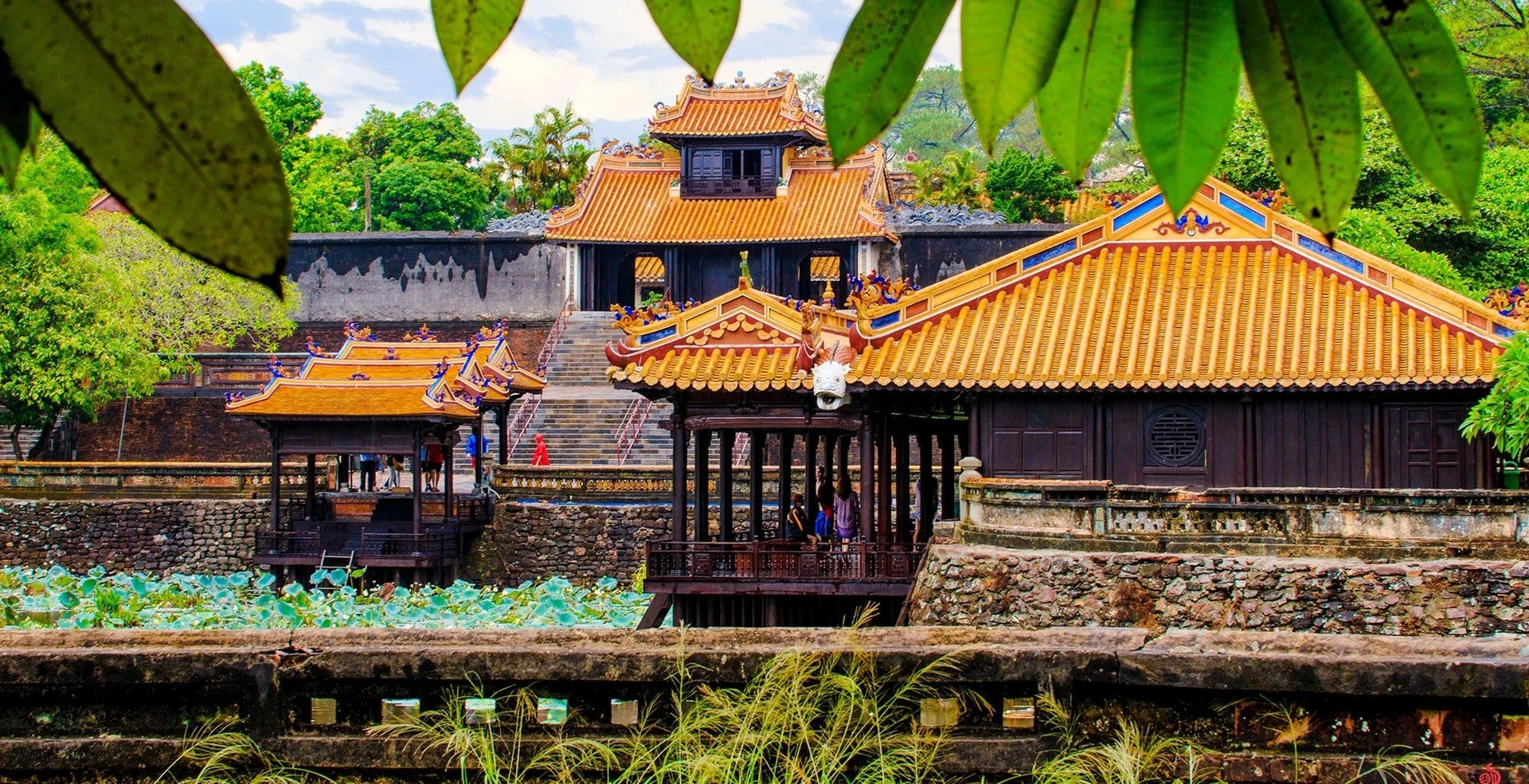The Nguyen Dynasty had 13 kings, but due to economic and political reasons, only 7 mausoleums were built, all of which remain to this day with their own architectural styles.
Gia Long Mausoleum (or Thien Tho Mausoleum) was built from 1814 to 1820, located in the middle of the Thien Tho mountain complex in Huong Tho commune, Huong Tra district,. This is the resting place of King Gia Long (1762 - 1820), the first of the 13 kings of the Nguyen Dynasty.
Gia Long Mausoleum has a circumference of more than 11,000 meters, in front of which there is Dai Thien Tho mountain as a precedent, on each side there are 14 mountains worshipping to form the position of "left dragon fruit" and "right white tiger". The mausoleum is located along the Perfume River, so in addition to the road, you can row a boat to enjoy the beautiful scenery on the Perfume River and then dock at Kim Ngoc ferry and walk a short distance to visit the mausoleum.
Gia Long Mausoleum is one of 7 Hue mausoleums that possess magnificent but no less harmonious natural lines of mountains, rivers, and trees, evoking a majestic and strangely quiet space.
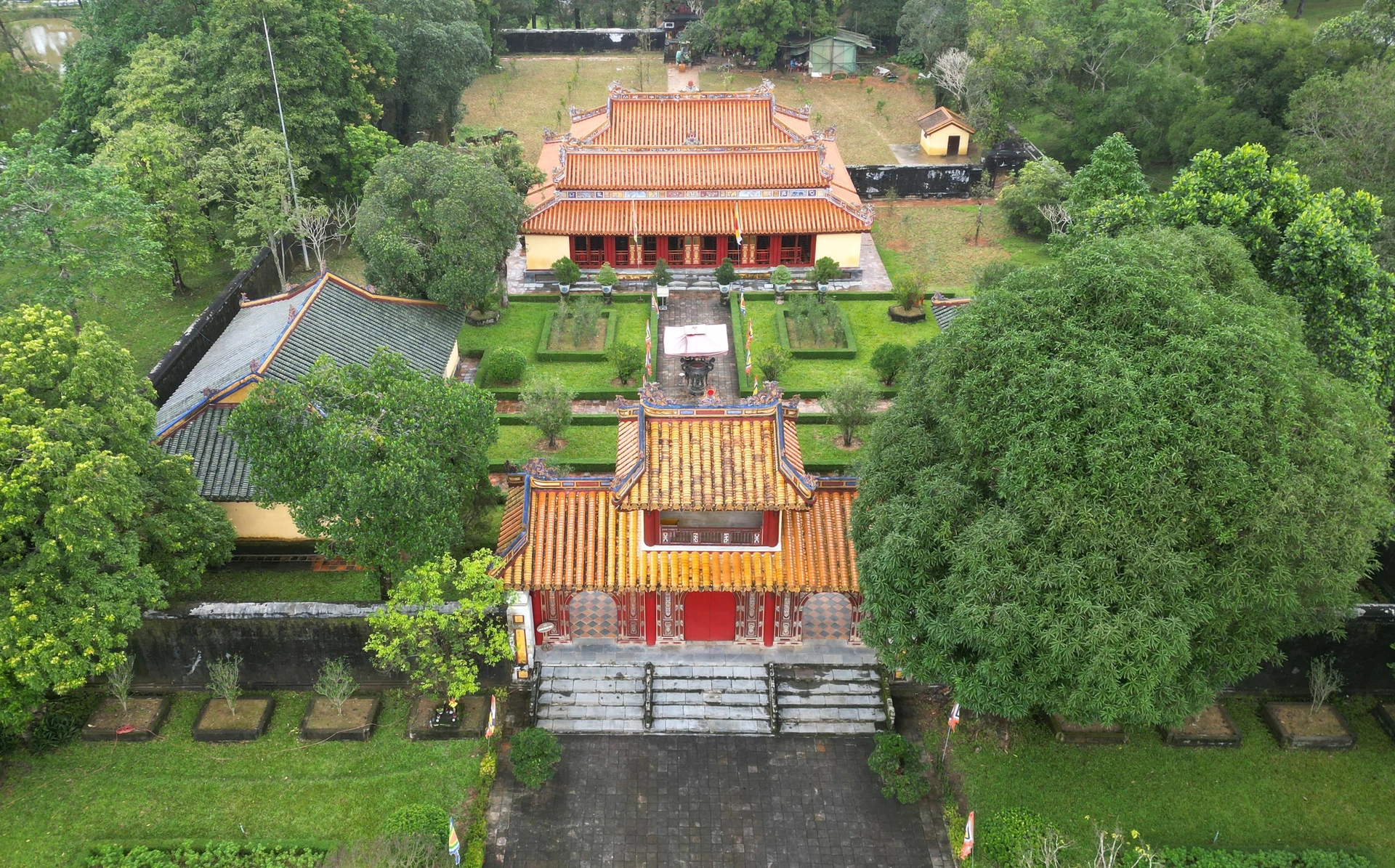

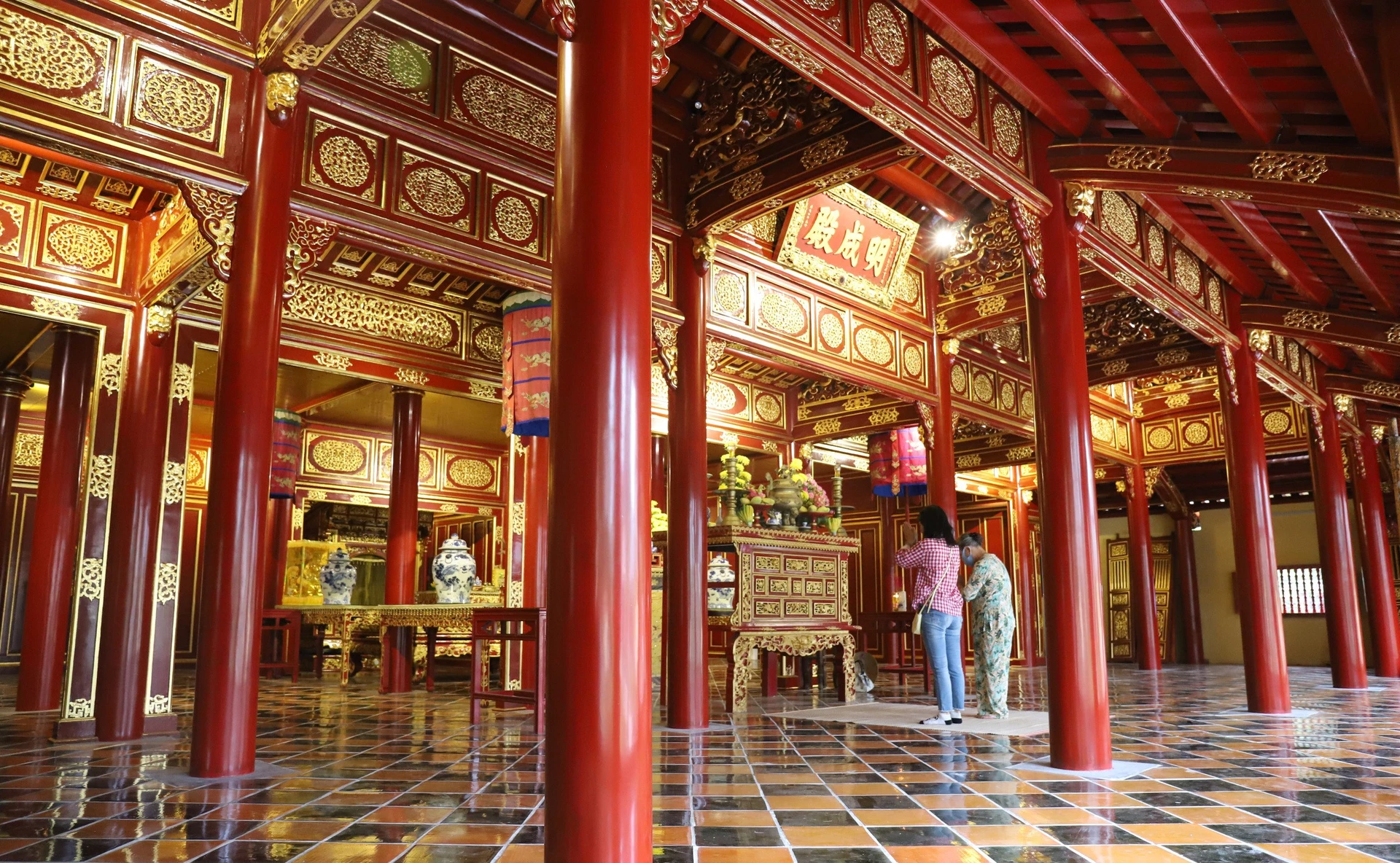
Photo: VnE
Khai Dinh Mausoleum located on the slopes of Chau Chu mountain in Thuy Bang commune, Huong Thuy town, is the resting place of King Khai Dinh (1885 - 1925). Khai Dinh Mausoleum is the work with the smallest area but the most laborious and expensive among the mausoleums of the Nguyen Dynasty. The architecture of the mausoleum has the intersection of the two cultures of East and West, reflecting the king's extravagant preferences at the time of his birth. Khai Dinh Mausoleum was built in 10 years, from 1920 to 1930.
The difference of Khai Dinh mausoleum compared to other Hue mausoleums is the intersection of Eastern and Western architecture. This is shown by the splendid reliefs meticulously assembled with crockery and glass, tea trays, crowns, and modern interior decoration items at that time such as tennis rackets, oil lamps,...

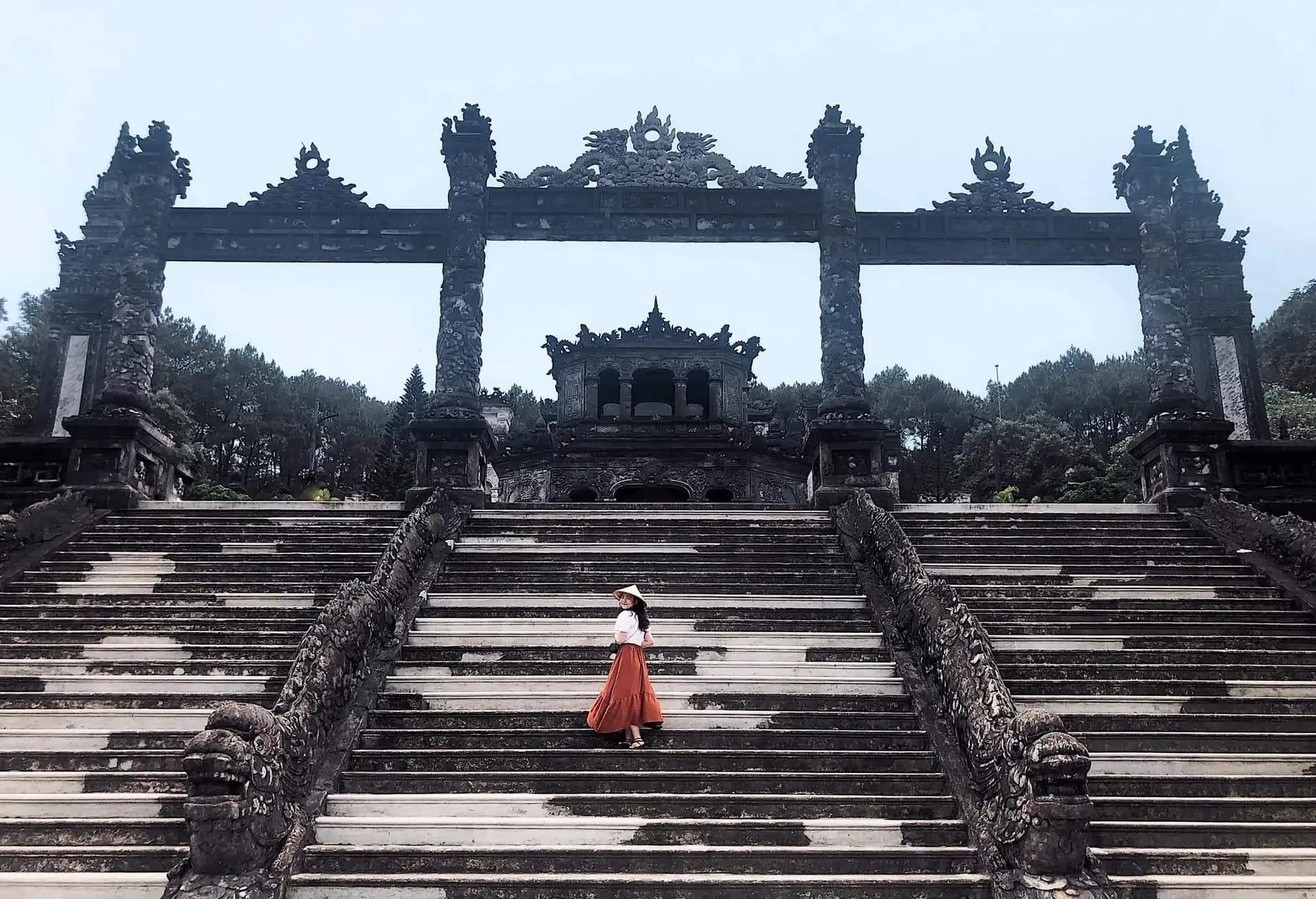
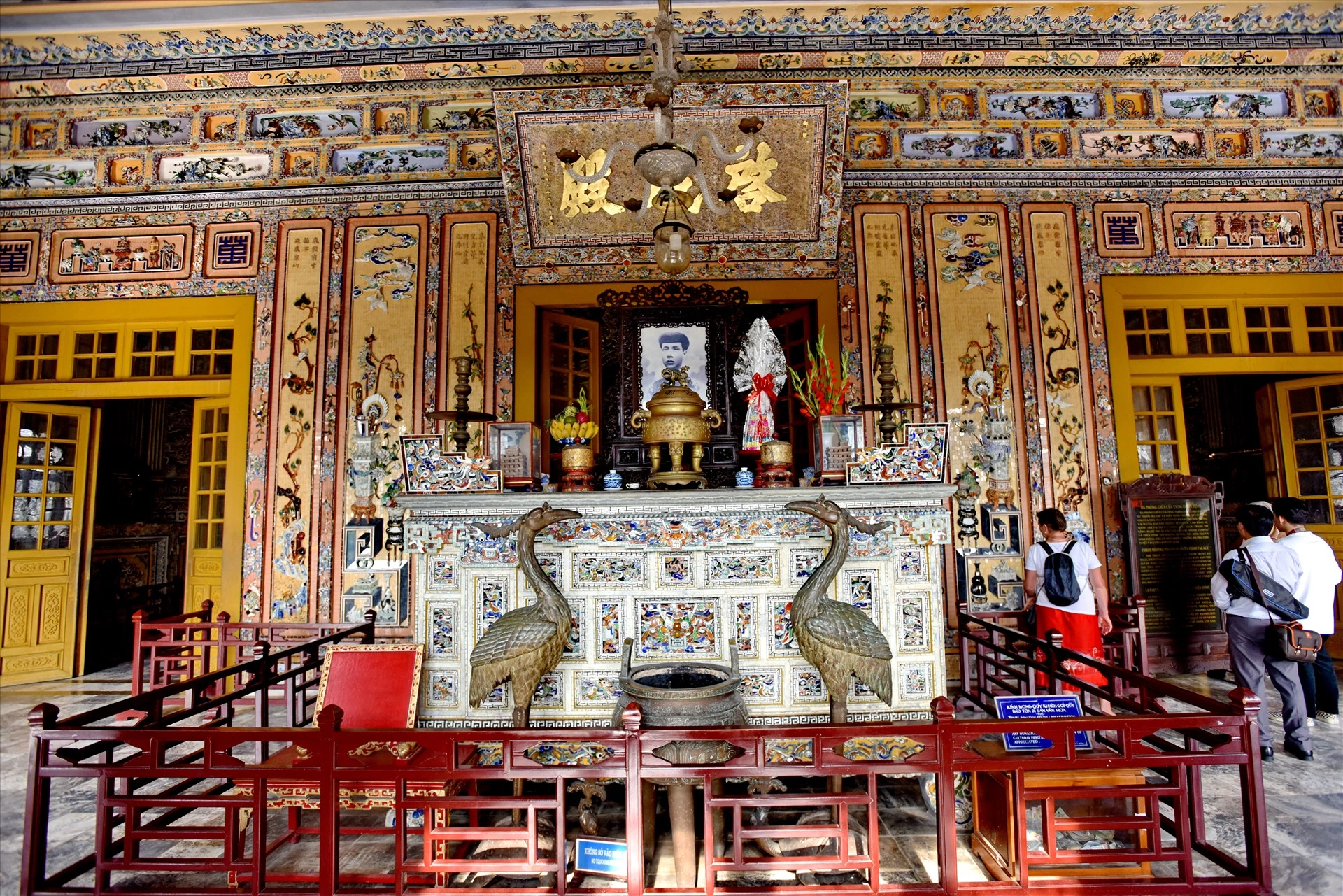

Photo: Ngo Tran Hai An
Tu Duc Mausoleum or Khiem Cung is located in a narrow valley in Thuong Ba village, Thuy Xuan ward, Hue city. The mausoleum has sophisticated architecture, charming landscape and is one of the most beautiful mausoleums of the Nguyen Dynasty royalty.
The mausoleum was built between 1864 and 1867 on an area of 475 hectares. Nearly 50 works in the mausoleum in the two areas of impregnation and tomb all have the word Khiem in their names.
Tu Duc Mausoleum has a spacious element, soft lines reflect the romantic soul of this poet king. On the grounds of Tu Duc mausoleum, there is also Kien Phuc Tomb, the 7th king of the Nguyen Dynasty. Kien Phuc was adopted as a son by King Tu Duc, who ascended the throne in December 1883 after King Duc Duc and Hiep Hoa.
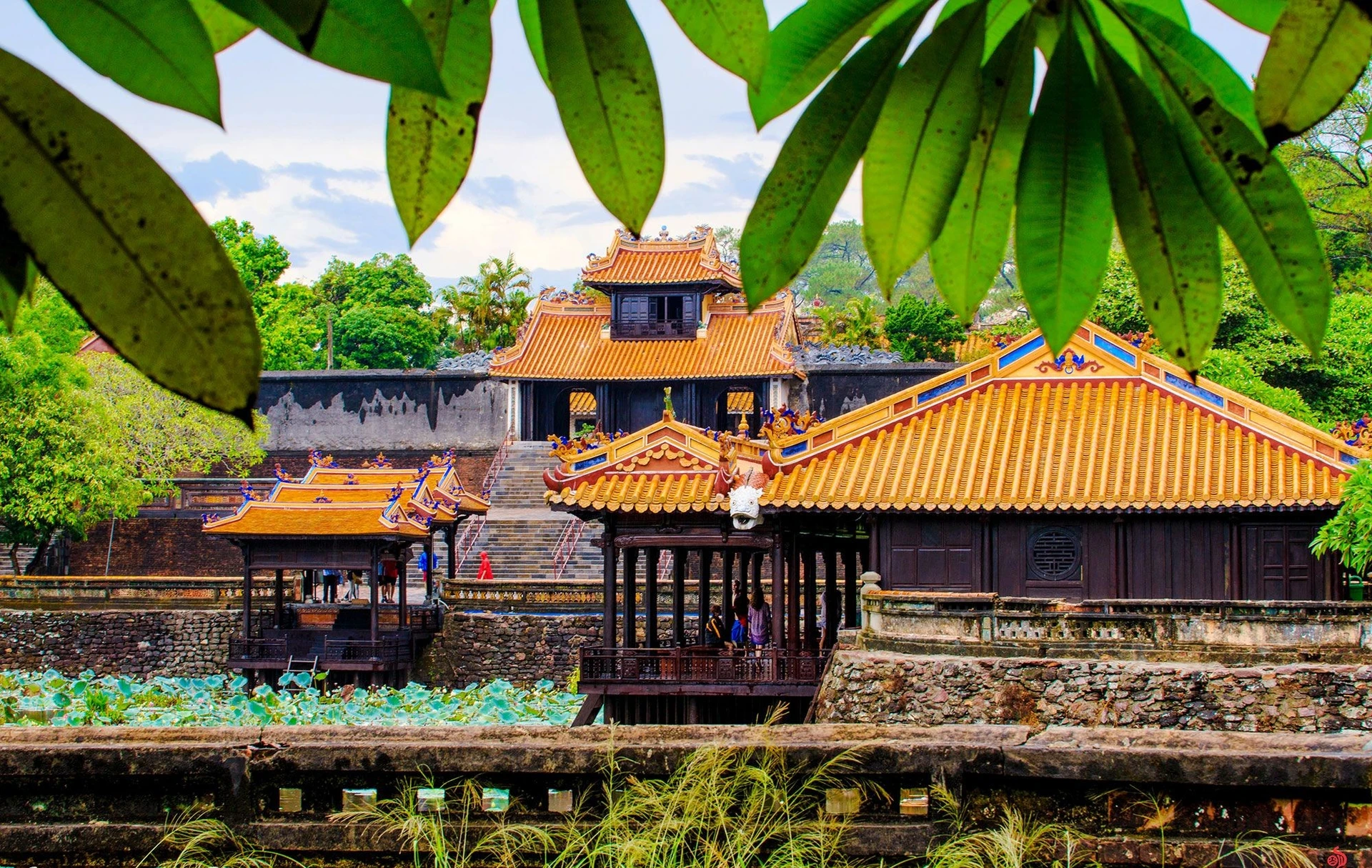



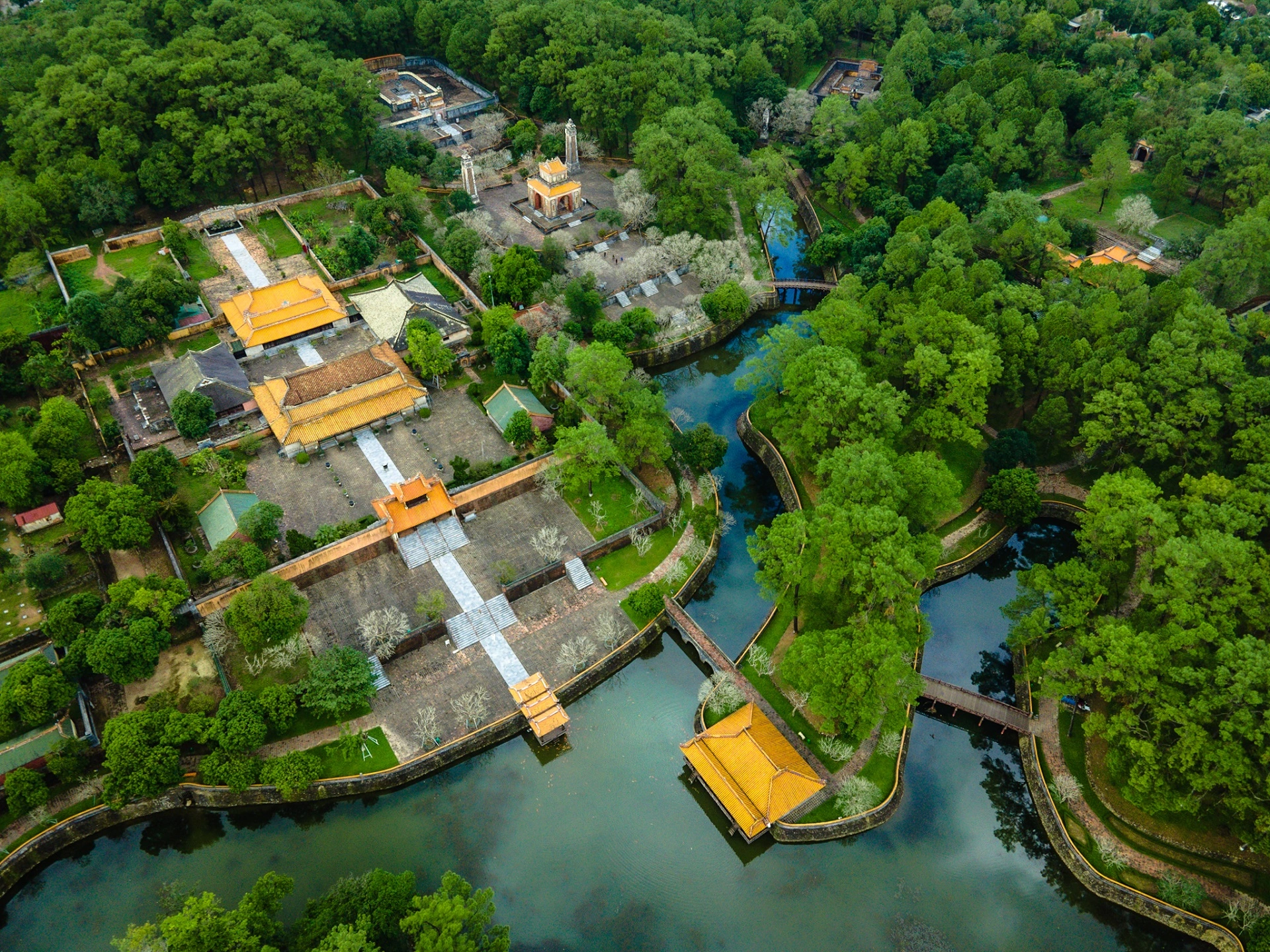
Photo: Ngo Tran Hai An
Duc Duc Mausoleum (or An Lang) is located in An Cuu Ward, Hue City. The mausoleum was built in 1889 and is the burial place of King Duc Duc, King Thanh Thai and King Duy Tan.
During the anti-French period, King Duy Tan and King Thanh Thai exchanged thrones to fight for the sovereignty of the nation and were exiled to a foreign country and later buried in Duc Duc mausoleum. Like the patriotism of the two men, ready to exchange the throne of power, Duc Duc Mausoleum therefore has Hue mausoleum architecture extremely simple, humble, and simple.
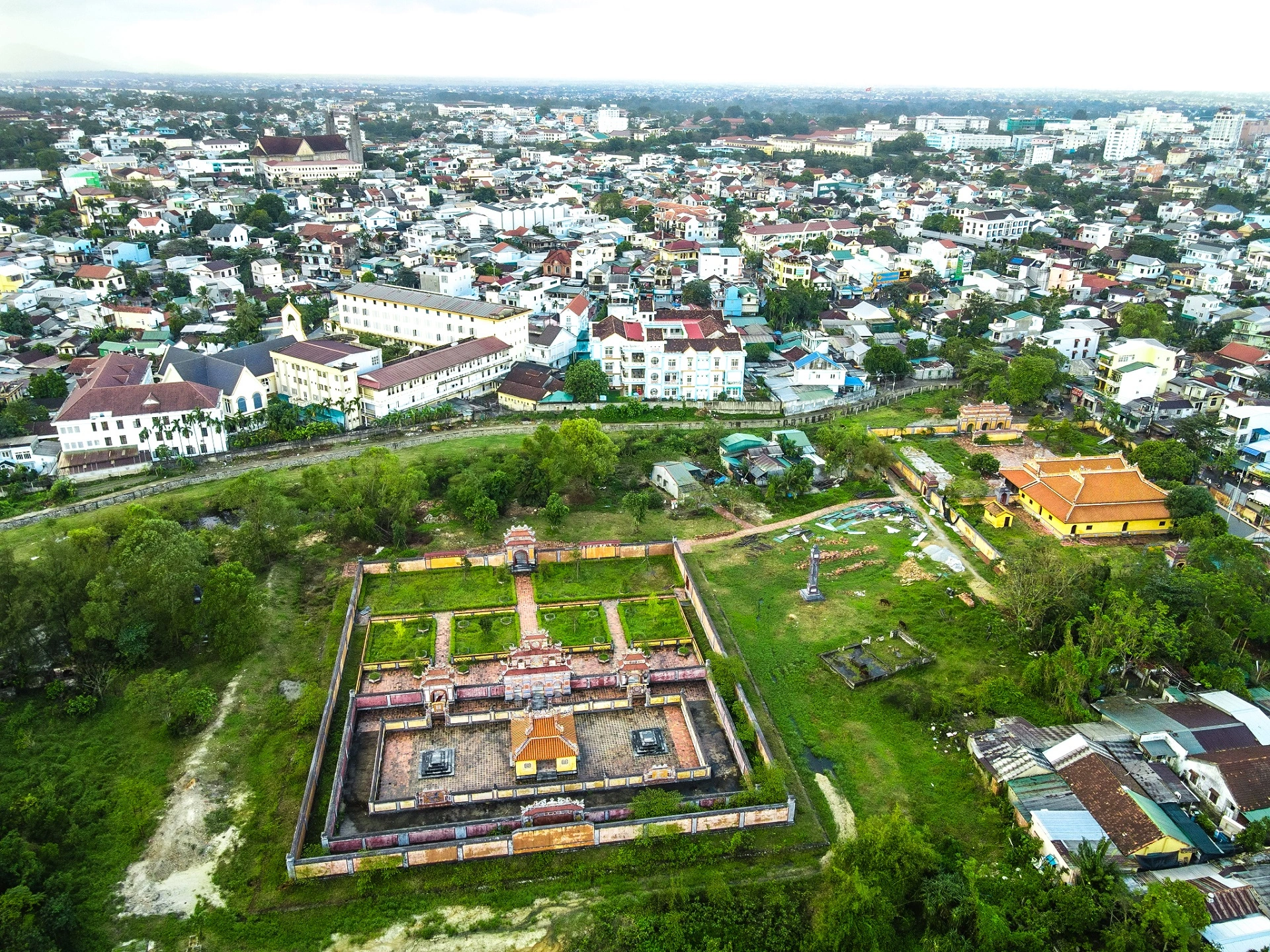

Photo: Ngo Tran Hai An
Minh Mang Mausoleum also known as Hieu Ling, the mausoleum has the main gate, the Great Hong Gate, which is only opened once to bring the king's coffin into the mausoleum. After that, the entry and exit must go through two auxiliary gates, Ta Hong Gate and Huu Hong Gate. The mausoleum has a poetic and charming scenery, interspersed with ancient architectural works with clear blue lakes, fragrant lotus blooming in summer. Minh Mang Mausoleum was built in 3 years (1840 - 1843) and needed 10,000 workers and soldiers to complete.
Minh Mang Mausoleum is a mausoleum that attracts visitors with static lines in architecture and harmoniously combines in the painting and poetic space of the lyrical natural scenery of flowers and leaves, partly expressing the majestic, strict but no less romantic personality of the king.


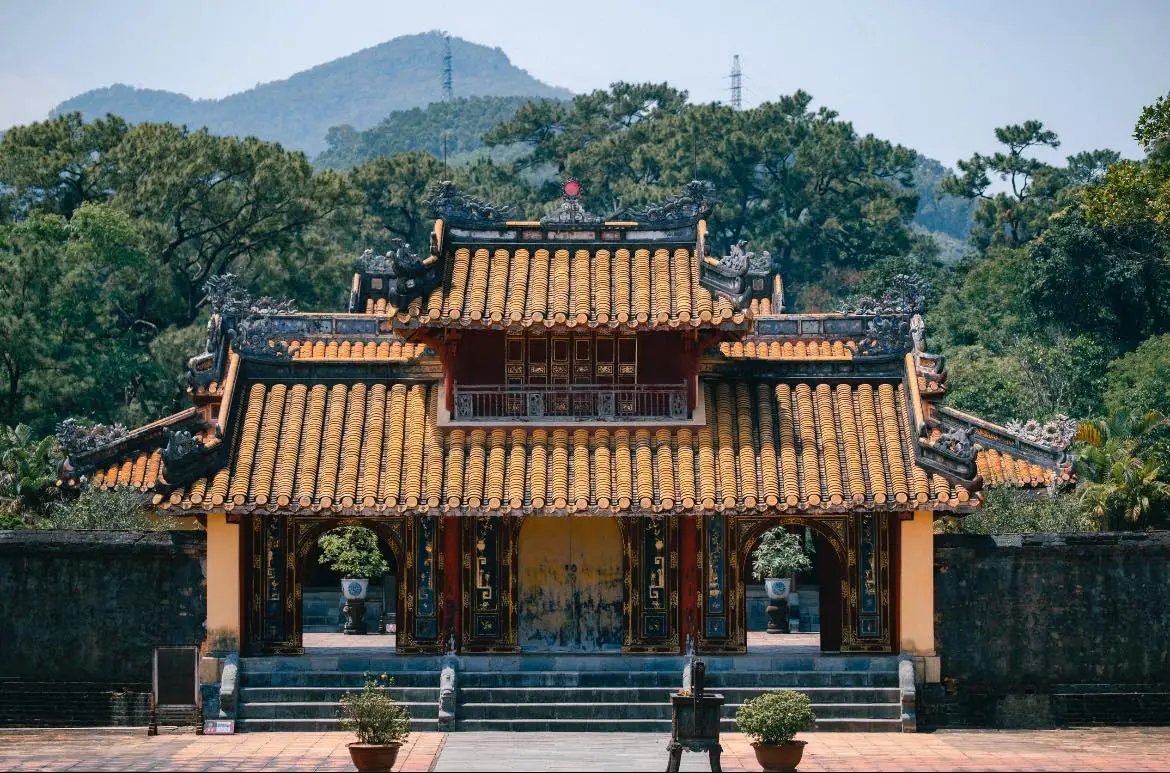

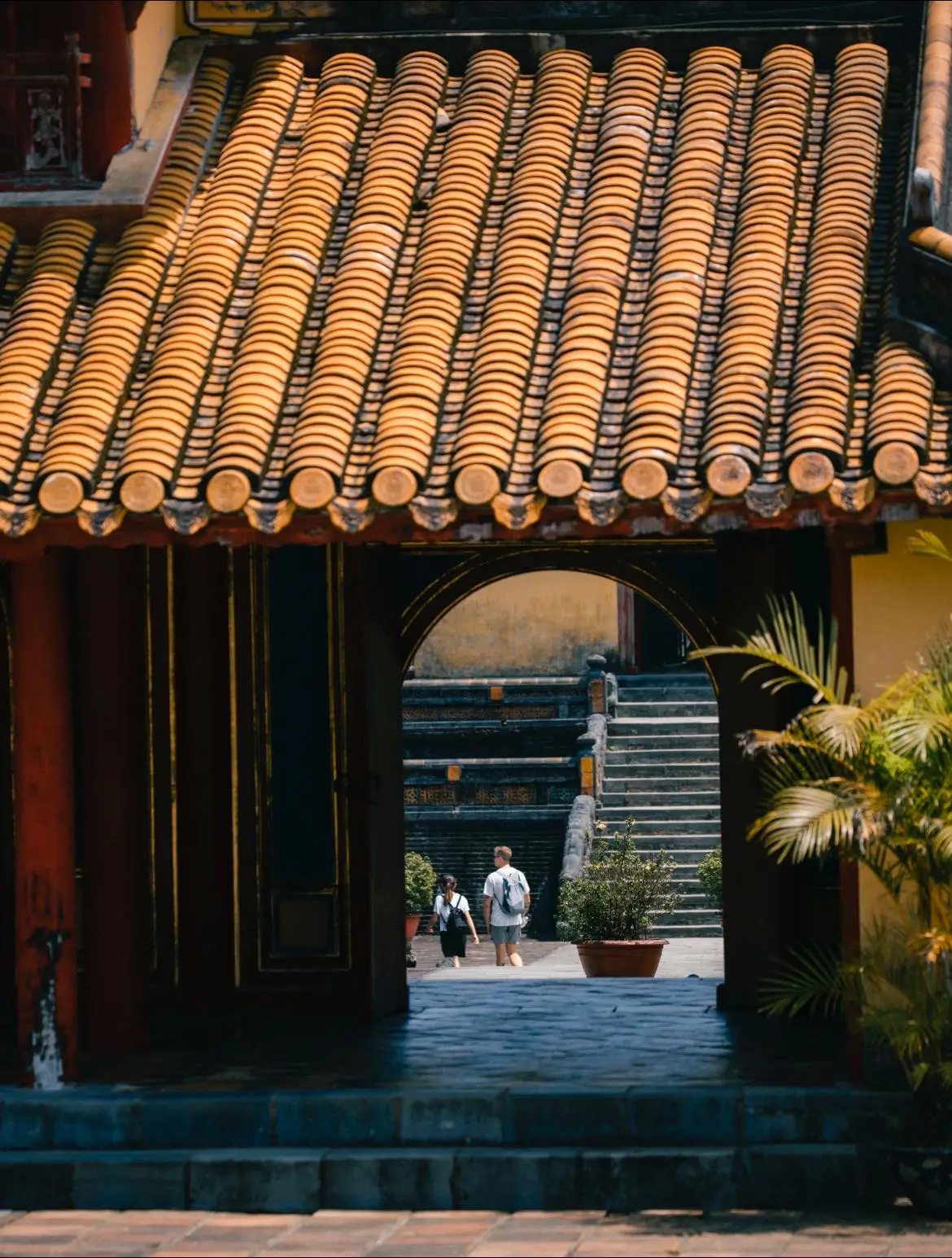
Photo: Ngo Tran Hai An
Dong Khanh Mausoleum, located in the complex of relics of the ancient capital of Hue, is the burial place of King Dong Khanh. The project is located in the middle of a rural area that is now Thuong Hai village, Xuan Thuy ward, Hue city. King Dong Khanh (1864 - 1889) reigned from 1885 - 1889, named Nguyen Phuc Ung Duong was the 9th king of the Nguyen Dynasty. The Mausoleum of King Dong Khanh brings traditional feudal architecture and is also influenced by Western European architecture. Dong Khanh Mausoleum is also the burial place of King Ham Nghi (1874 - 1944).

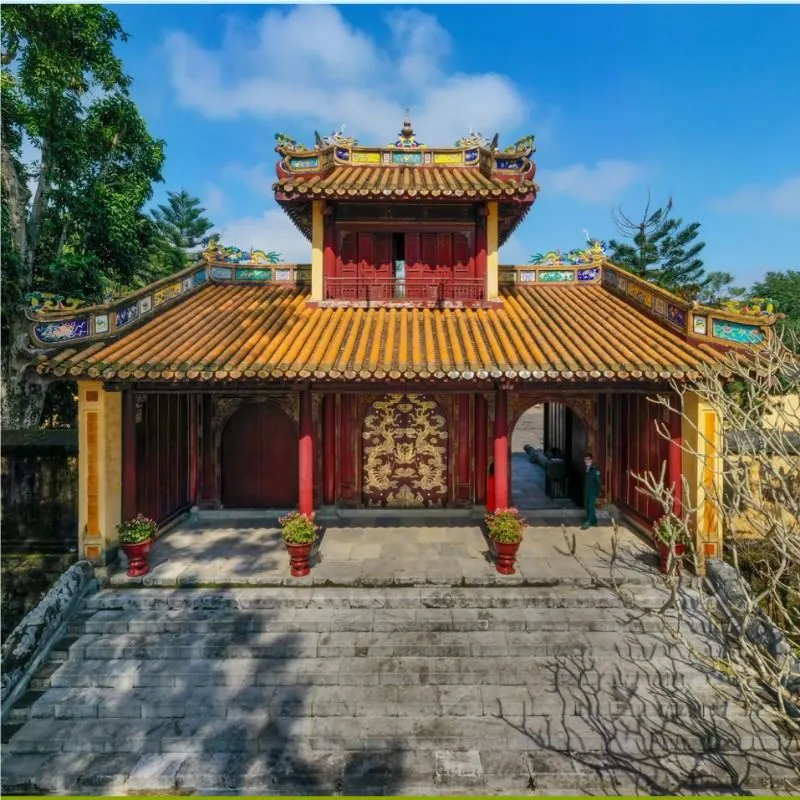

According to VnE
